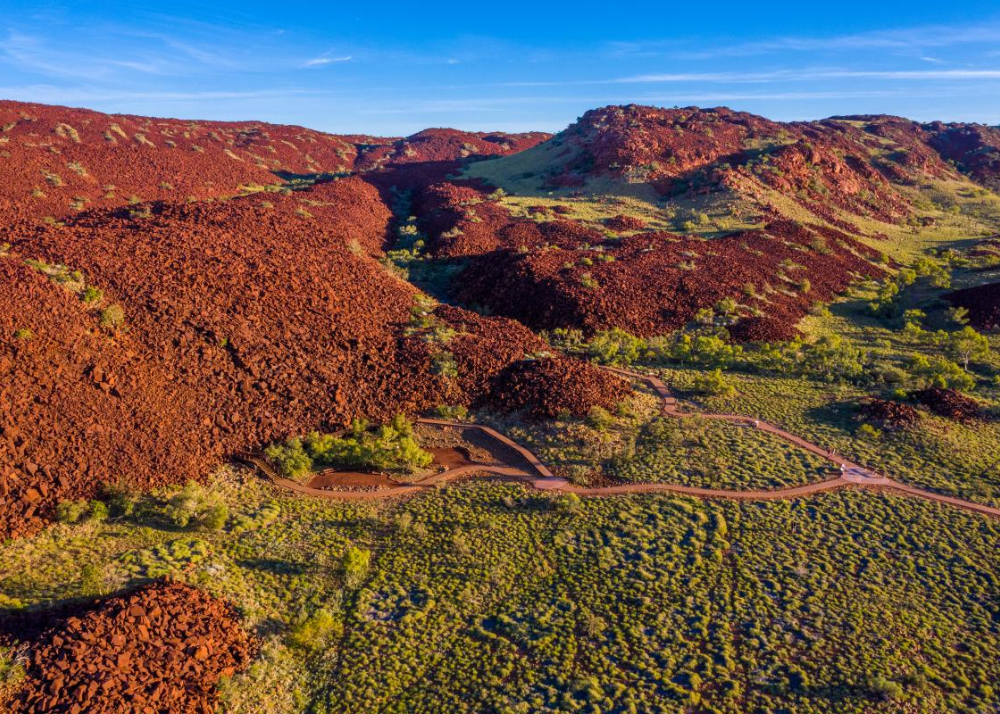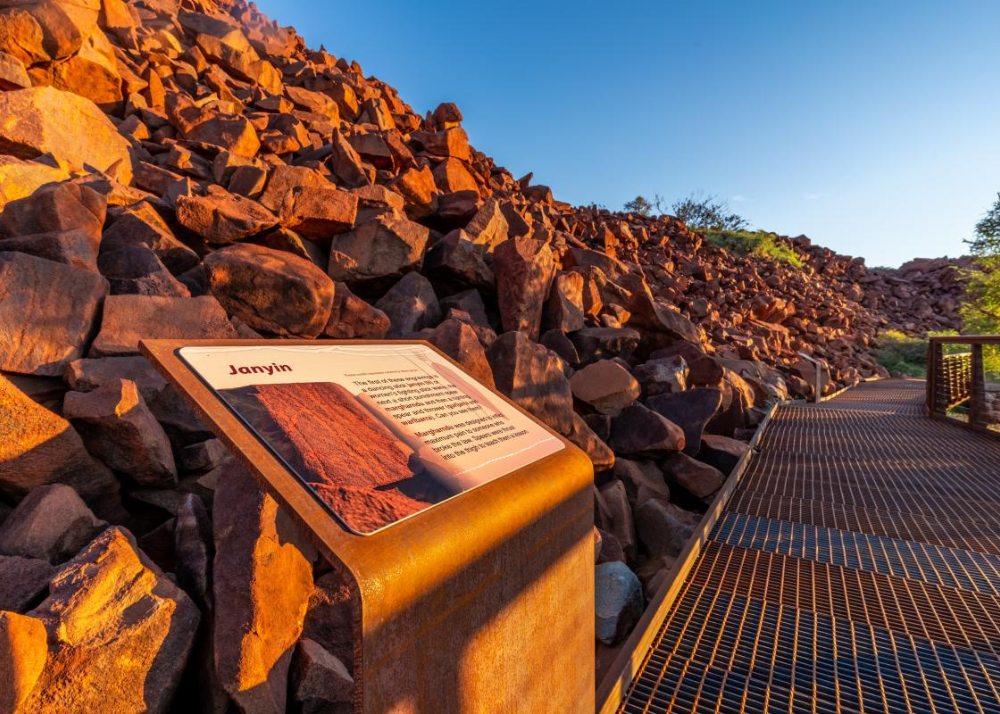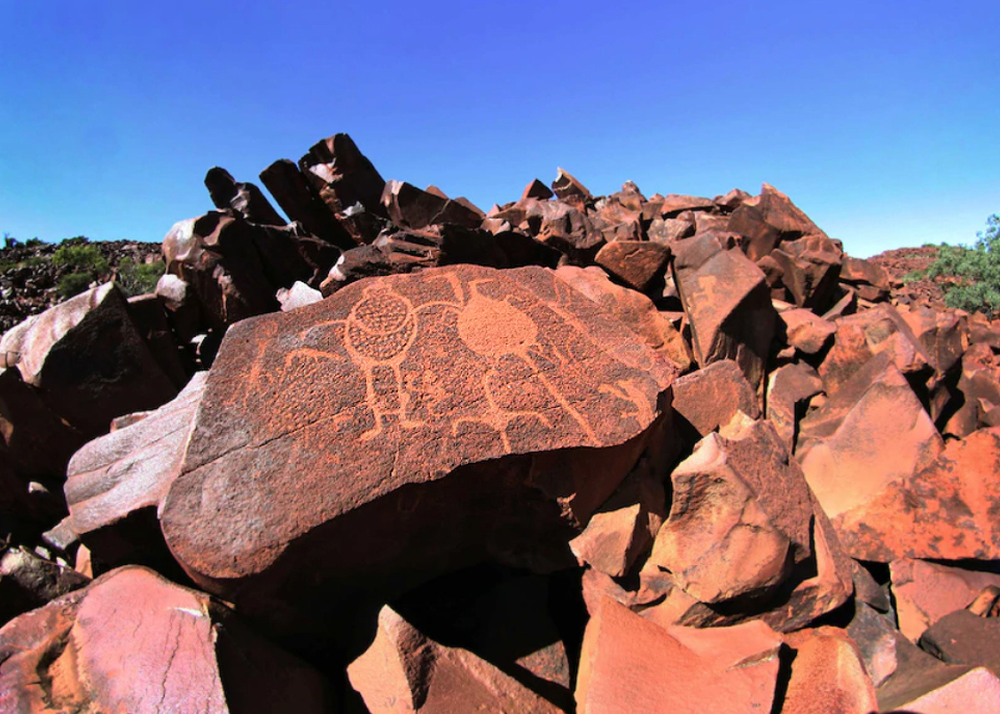Murujuga – Australia’s Artistic Treasure
- 187 Views
- piturednik
- DESTINATIONS
In the northwest of Australia, in the region known as Murujuga, lies one of the world’s most important rock art sites. This area includes the Dampier Archipelago and the Burrup Peninsula. It has been officially inscribed on the UNESCO List for its outstanding cultural and historical value.
The World’s Highest Concentration of Petroglyphs
Murujuga is home to around two million petroglyphs, placing it among the areas with the highest concentration of rock carvings on the planet. The depictions include anthropomorphic figures, animals, geometric patterns. And the oldest known representation of a human face. These artworks are an invaluable record of the life and spirituality of the first modern humans in Australia, dating back more than 50,000 years.
The Living Tradition of the Ngarda-Ngarli People
In addition to its archaeological value, Murujuga remains a vital spiritual center. Mainly for the Ngarda-Ngarli people, who regard this land as sacred. Their rock art conveys laws, beliefs, and history, with the care and preservation of the site continuing for thousands of years. UNESCO status provides an extra layer of protection, ensuring the preservation of this heritage for future generations.
For more interesting destinations, click here.
The Second Australian Site Recognised for Aboriginal Culture
Murujuga is Australia’s 21st UNESCO World Heritage site. It is also only the second to be recognized primarily for its Aboriginal cultural values. This designation confirms the global significance of Indigenous heritage and reinforces Australia’s role as a guardian of some of the world’s oldest cultural landscapes.
A Destination Worth Visiting
For lovers of history, culture, and natural beauty, Murujuga offers a unique combination of unspoiled Australian coastline and rich spiritual heritage. Guided tours with local custodians reveal the meaning behind the petroglyphs. It is a way for visitors to connect to Indigenous stories that have been passed down for thousands of years.







